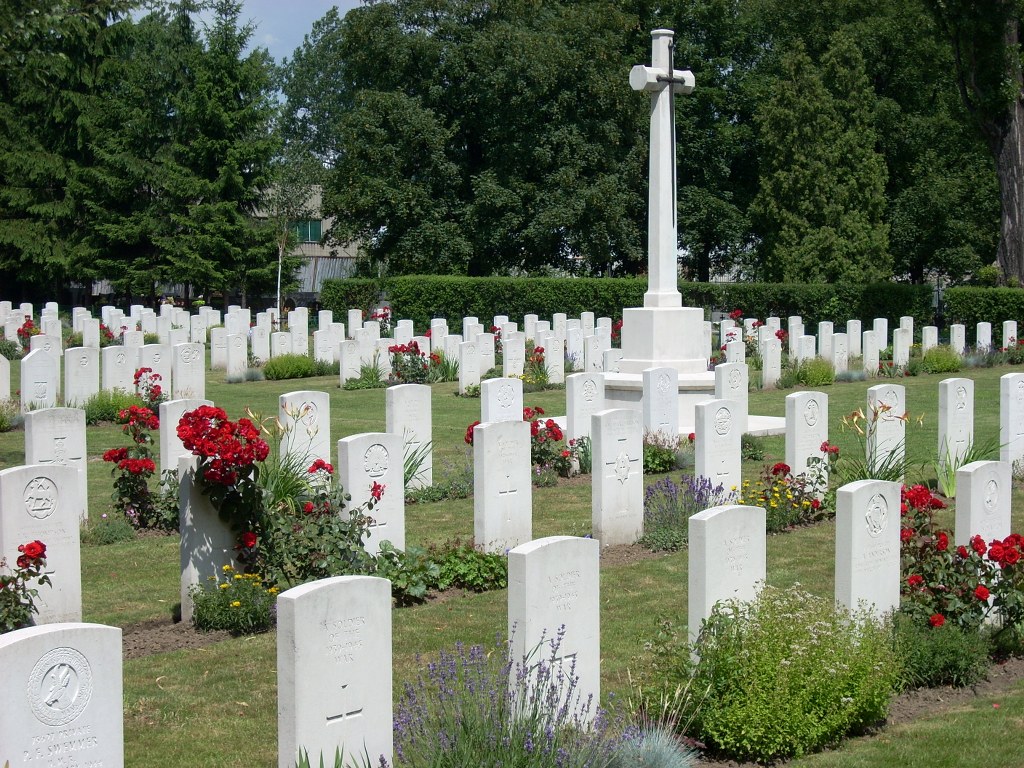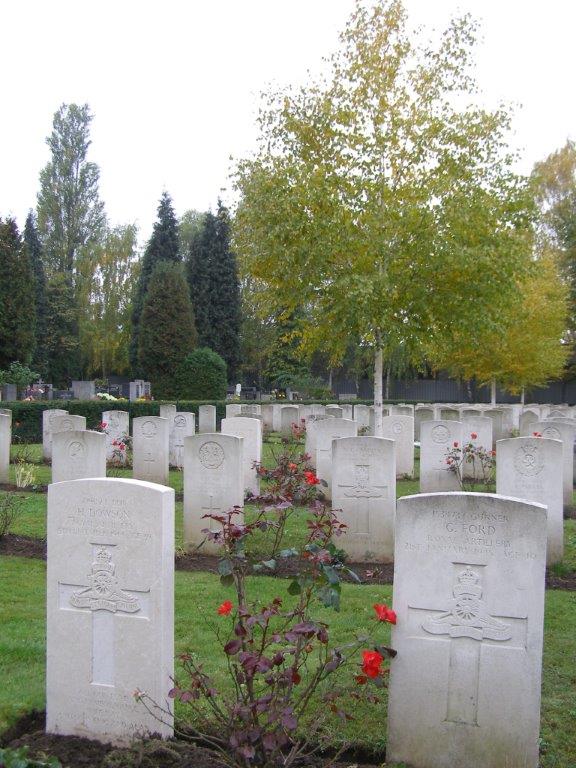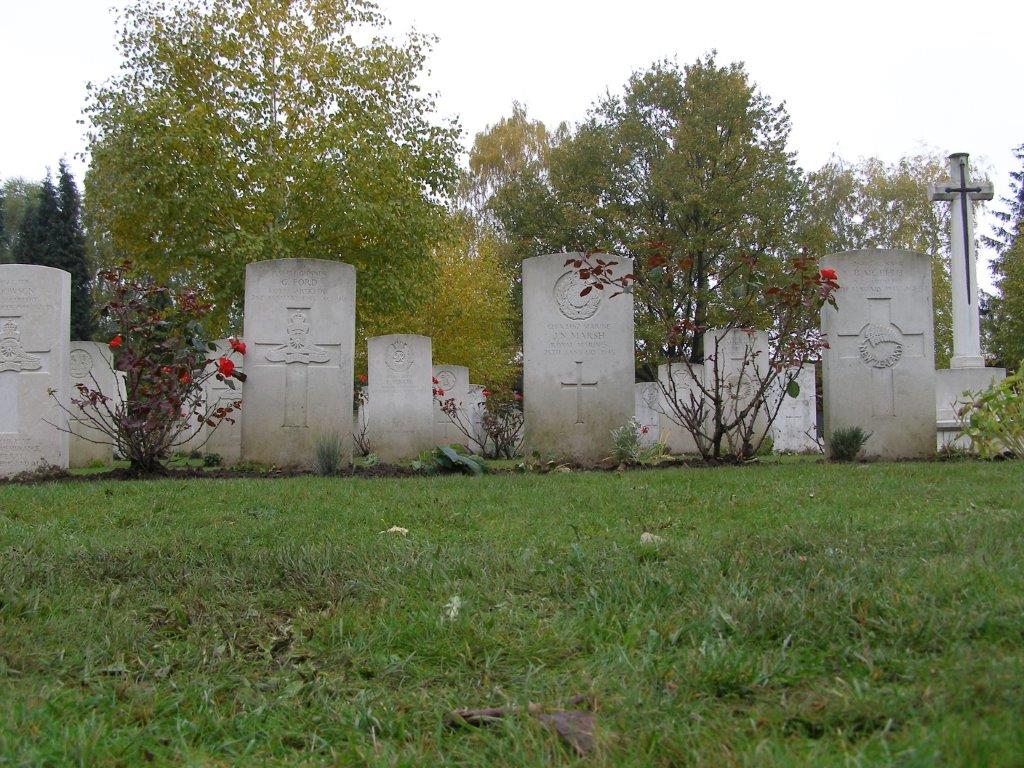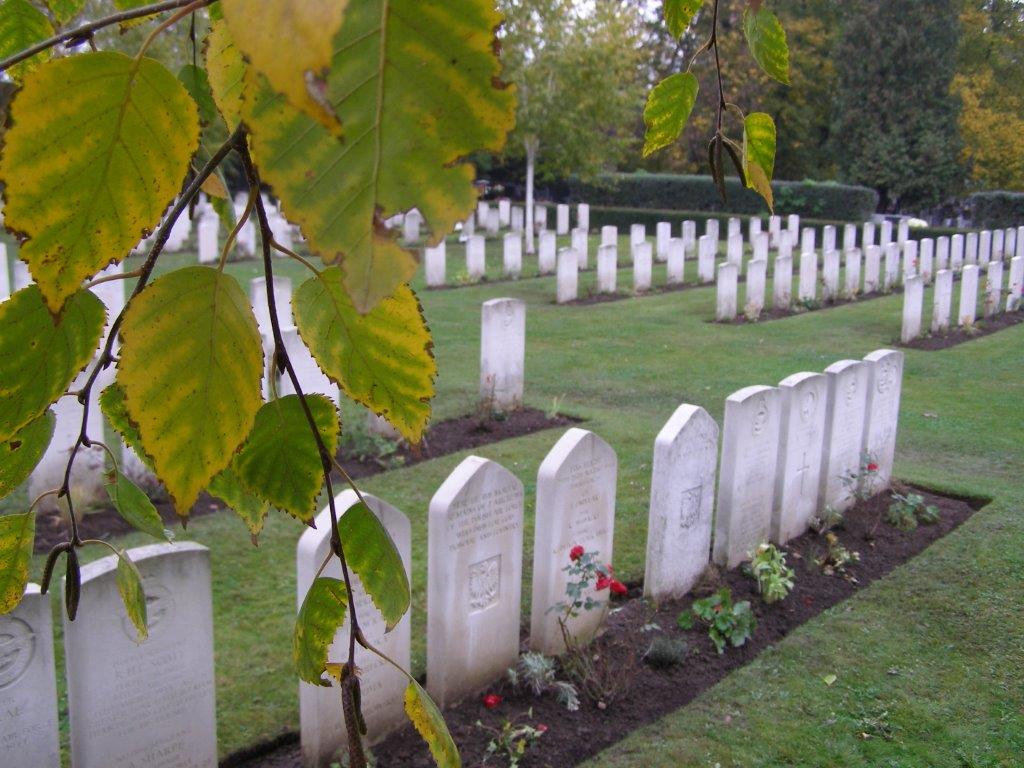Krakow Rakowicki Cemetery
- Country Poland
- Total identified casualties 484 Find these casualties
- Identified casualties from Second World War
- GPS Coordinates Latitude: 50.07679, Longitude: 19.95493
Location information
Krakow is a city in the south of Poland about 290 kilometres south of Warsaw.
From the A4 WROCLOW to KRAKOW motorway continue to the end, following signs for KRAKOW CENTRUM. The road then changes to the A7 PASTERNIK. Continue for approx 4 kilometres to a roundabout. At the roundabout follow straight ahead along JOZEFA CONRADA then OPOLSKA. Continue for approx 4 kilometres then turn right into AL. 29 LISTOPADA (at a large crossing after passing under a railway bridge). Take the first left into JANA PRANDOTY (there is a petrol station on the corner).
Please note that there is limited parking around the cemetery during holidays. On entering the cemetery continue straight for approximately 100 metres then turn left (CWGC signposted) and continue for a further 200 metres where the Commonwealth War Graves plot can be found.
The cemetery address is:-
Cmentarz (Cemetery) Rakowicki
Ulica Jana Prandoty
31-519 Kraków
Poland
GPS Location is:-
N 50 04 43
E 19 57 19
Visiting information
The CWGC plot is within the large Municipal cemetery in Krakow, a town in the south of Poland, approximately 290 kilometres south of Warsaw.
ARRIVAL
Routes to the cemetery are signposted. The entrance to the northern section of the municipal cemetery is through a brick columned gate with a pedestrian entrance approximately 200 m from the junction of Rakowickia and Biskupa Jana Pandoty. There is a sign in 4 languages identifying the cemetery, and a CWGC Roadside Direction Sign is opposite the entrance.
The CWGC Section is located approximately 250 m north of Biskupa Jana Pandoty in the northwest corner of the municipal cemetery.
PARKING
There is off-street parking available with space for up to 10 vehicles close to the cemetery main entrance.
ACCESS. LAYOUT AND MAIN ENTRANCE
The Commonwealth War Graves section is a prominent rectangular area within the large Municipal cemetery.
Access to the cemetery is through a double metal gate from the municipal Cemetery. A paving stone pathway leads directly onto grass.
The Cross of Sacrifice is in the centre of the cemetery.
Located in the right, bottom corner of the cemetery is a small Indian Army burial section.
The register box is built into a pillar that stands close to the entrance to the CWGC plot within the cemetery.
There is a grass bank running through the cemetery, one side is higher than the other side.
All paths in the CWGC plot are grass.
There are no seating areas in the cemetery.
ALTERNATIVE ACCESS
Alternative access into the main cemetery is through a service gate that is approximately 4 metres wide.
Flat paths follow route around the main cemetery.
ADDITIONAL INFORMATION
There is a memorial plaque inside the entrance to the CWGC plot.
The cemetery is open
April – September 07:00 - 20:00
October – March 07:00 – 18:00
History information
At the end of the Second World War, the graves service of the British Army of the Rhine gathered together Commonwealth graves from all over Poland into three cemeteries, this being the largest.
Those buried here died while prisoners of war during the German occupation, most of the graves coming from the cemetery at the large camp at Lamsdorf, Stalag VIIIB (after 1943 known as Stalag 344), where there was a hospital of 450 beds used only for Commonwealth prisoners. Before this hospital came into being the sick at Lamsdorf were treated at the hospital at Langenbielau: those who died were buried in Langenbielau Catholic Cemetery, and these graves were also moved to the Commonwealth plot at Krakow. Other graves brought into the cemetery were those of airmen who lost their lives during the Warsaw supply drop and the bombing of factories, railways and other strategic objectives. Some of these airmen were originally buried in Warsaw.
There are now 483 Commonwealth casualties of the Second World War buried or commemorated in Krakow Rakowicki Cemetery. There are also 24 non war graves, those of civilian internees (including two Imperial War Graves Commission gardeners) and 15 Polish war graves.





